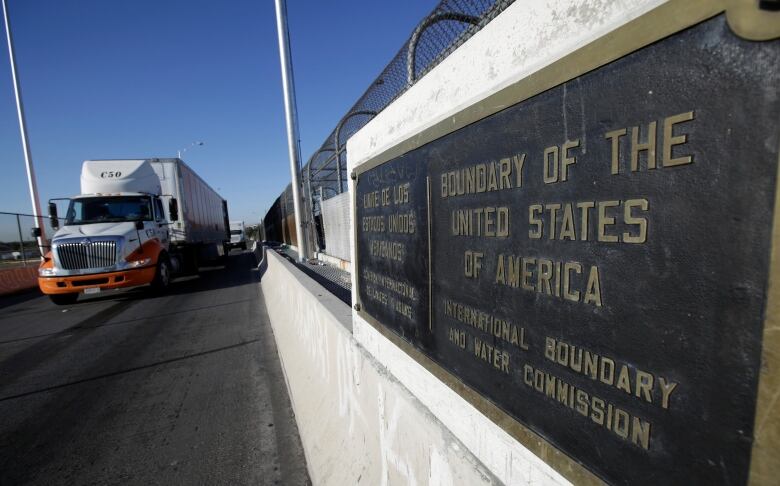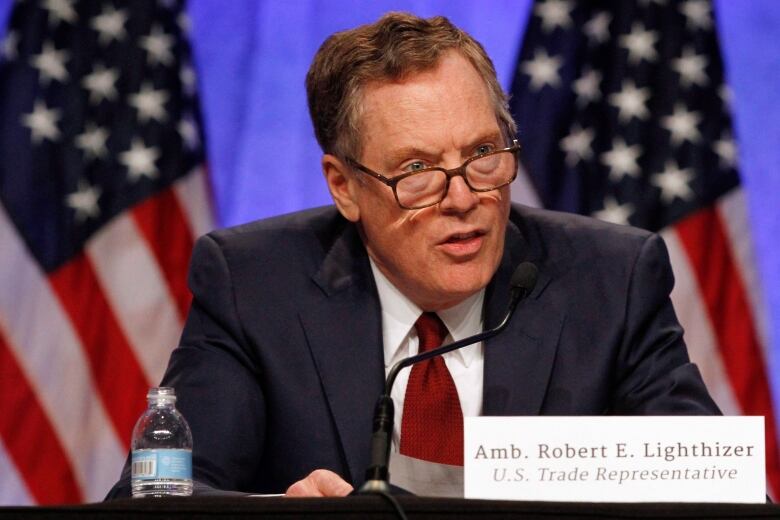The NAFTA numbers game: why trade deficit figures seldom agree
The U.S.-Canada trade balance is a hard number to nail down - a task made harder by bad-faith accounting

There is no single, undisputed figure describing the balance of trade between the United Statesand Canada. Even within the U.S. government itself,different departments using different methodologies routinely come up with different numbers.
That said, no credible set of numberssupports President Donald Trump's repeated claim that Canada runs a large trade surplus with the United States.
Trade between the U.S. and Canada is not a closed circuit; goods from other countries may enter Canada before they cross into the States. A semi-finished machine might come to Canada from the U.S., have a Canadian widget attached to itand then be re-exported to Asia or Europe.
If a Canadian crossesthe border and buys a used car to bring home, does that count as a U.S. export? Yes, according to both the Canadian and U.S. governments.But if that same Canadian buys a replacement part for that car on eBay, and the U.S. seller sends it to him by mail, does that count as an American export? Not according to Washington.
The Canada-U.S. trading relationship is complex andno one number can ever be more than an approximation. But a lot of thought and effort goes into making that approximation.
Same goods, different math
Canadian officials repeatedly pointto U.S. statistics to bolster their arguments about trade. But there's something circular about their argument.
"Data for U.S. exports to Canada are derived from import data compiled by Canada," says the U.S. Census Bureau.
And Canadian government trade figures depend on data collected by the Americans. It's a measure of just how interconnected the two economies are.
"The use of Canada's import data to produce U.S. export data requires several alignments in order to compare the two series," the U.S. Census Bureau's explainer says.
Take the example of that eBay transaction mentioned above. The U.S. government didn't take note of that car part when it was shipped out of the U.S. but Canada did, and included it when it informed the U.S. Census Bureau that $23.3 million US worth of merchandise was mailed into this country from the States in January. At the end of 2018, the U.S. will roll those numbers into its own estimates.

Canada also informed the U.S. that Canadian buyers purchased $201.7 million US of U.S.-made goods from sellers outside the U.S. in January, 2018.Because those American goods weren't sold onAmerican soil, the U.S. didn't count them as exports. But it will add that number to its estimate of total U.S. exports at the end of the year.
When a CN Rail train carrying Canadian goods crosses the border, Canada counts the goods as exportsand the U.S. counts them as imports. But the U.S. also willcount the locomotive and the railcars as imports, and the U.S. Bureau of Economic Affairs will add an estimate of the total freight cost to the border more accounts that need reconciling.
Muddying the waters
Trade statistics are probably becoming less reliable over time because of the phenomenon of re-exports. And this is where some of America's more sophisticated protectionists (not Donald Trump) make the case that America is losing out under NAFTA.
Say a Canadian company sells a truckload of widgets to a buyer in Mexico.It can load them on a truck and ship them across the U.S. as bonded cargo; U.S. Customs will seal the truck at the border and will not be reopened until it reaches Mexico. It will never appear in U.S. import statistics.
But since Canadian goods aren't subject to U.S. tariffs anyway, the Canadian company may not go to the trouble of bonding. It can simply import the goods into the U.S., keep driving south, and then re-export the goods from the U.S. to Mexico.
If it does, those goods will appear in U.S. statistics as "imports for consumption"and will be counted in the balance of trade between the U.S. and Canada even though their real destination is Mexico.
When they cross the Mexican border, they'll be counted again in asU.S. exportsto Mexico (even though they're actually Canadian) and will affect the balance of trade between those two countries.
A large and growing share of the goods that enter Canada from the U.S. are re-exports of goods from other countries. These foreign goods have undergone little or no modification in the U.S. The States sends more re-exports to Canada than to any other countryabout$50 billion US worth in2013.
As tariffs have fallen worldwide, many exporters have found it more convenient to pay the tariff and passgoods through U.S. Customs than to deal with the costs and paperwork involved in bonding. The share of U.S. exports to Canada that are actually foreign re-exports has doubled since NAFTA began.
'Data trick'
Public Citizen, an anti-NAFTA group based in Washington, has seized on re-exports as proof that NAFTA is ripping off Americans.
"The primary data trick used to vastly understate the NAFTA deficit is to count as 'U.S. exports' to Mexico and Canada products that are actually just 're-exports'," says Public Citizen in one report. "These foreign-made exports do not support U.S. production jobs."
Citing the U.S. International Trade Commission, Public Citizen points out that re-exports accounted in 2016 for 17.1 per cent of total U.S. exports to Canada. Cut those foreign goods out of the equation, the report says, and "the U.S. goods and services trade balance with Canada was a $32.6-billion deficit," rather than the $12-billion surplus officially recorded by the U.S. government.
And that argument makes sense until you noticethat Public Citizen only applies this math to the U.S. side of the equation, while continuing to count everything that comes in from Canadaas Canadian.
The U.S. International Trade Commission itself has reported that "the total value of re-exports that enter the United States is likely similar to the value of re-exports that leave the United States. By subtracting general imports from total exports, the value of re-exports would appear to be 'cancelled out'."
And according to Statistics Canada, half of the re-exports that entered the U.S. from Canada in 2016 were actually American goods returning to their country of origin.

Comparing U.S. domestic exports to Canadian total exports (including re-exports) is an apples-to-oranges comparison that seems designed to produce an imaginary deficit. That's whatU.S. Trade Representative Robert Lighthizer did when he claimed, citing Canadian government figures, that "Canada has an over $87-billion USsurplus with the United States."
So the Canadian side prefers the U.S. stats which show a bigger U.S. surplus while Lighthizer cherry-picks (and misrepresents) Canadian stats.
Meanwhile, real economists are tearing their hair out arguing that the balance of trade is the wrong tool to measure the health of a trading relationship and President Trump ignores both governments' numbers, preferring to pull his own out of thin air.













_(720p).jpg)


 OFFICIAL HD MUSIC VIDEO.jpg)
.jpg)



























































































